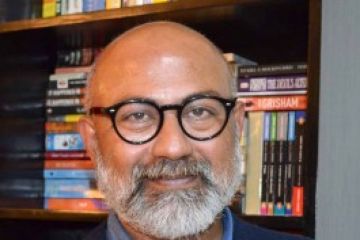
Musharraf Ali
Farooqi is a hard man to catch in the weeks leading up to the announcement of
the winner of the Man Asian Literary Prize 2012. With a host of literature
festivals making demands on his time, he’s travelling between countries.
His exquisitely
written book, Between
Clay and Dust, takes us back to a time when life was more quaint, more
dainty, and more principled than today. Ambiguous in its setting, it looks at
the slow disintegration of the arts at a time when two ne





